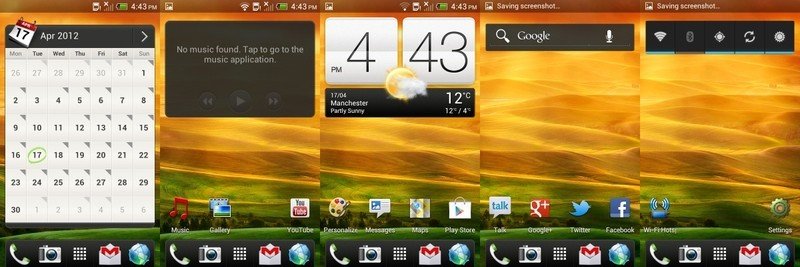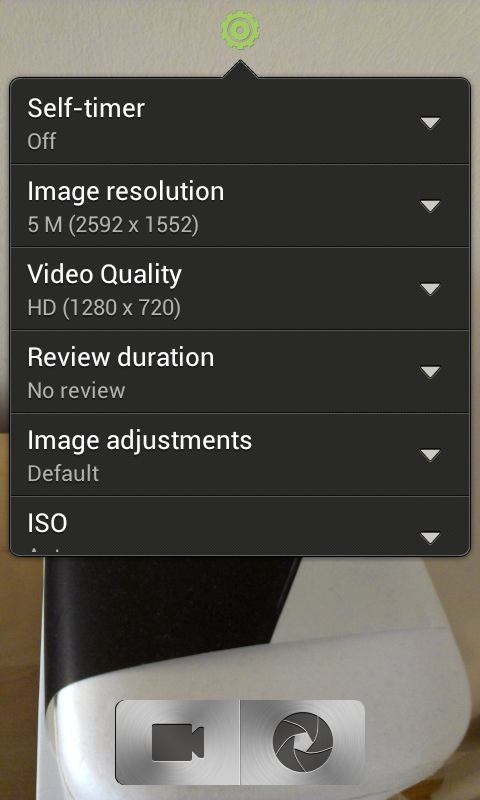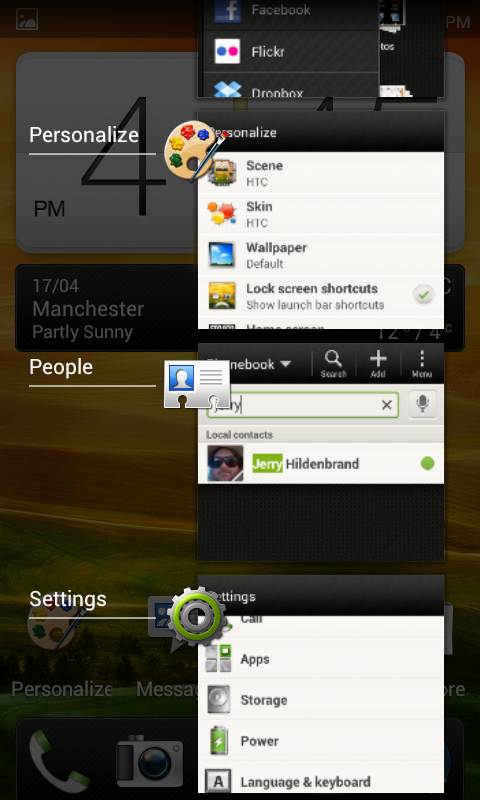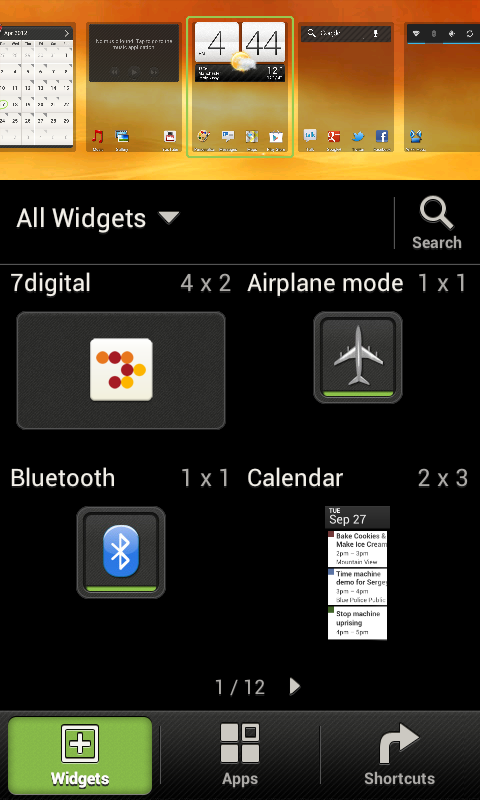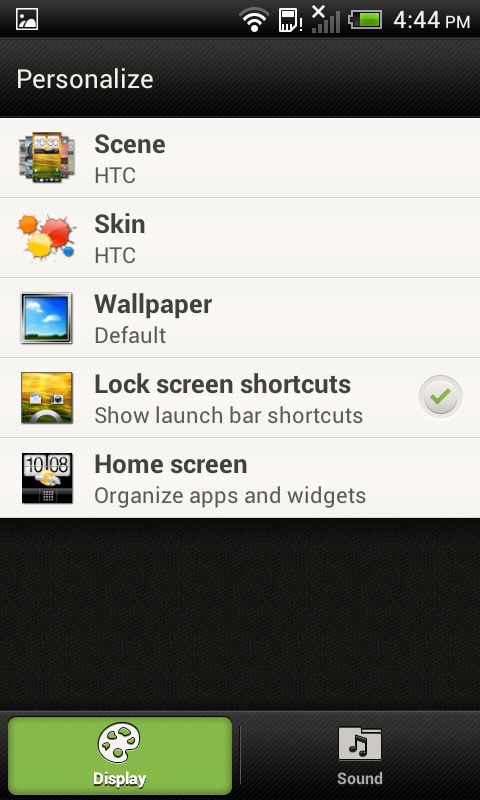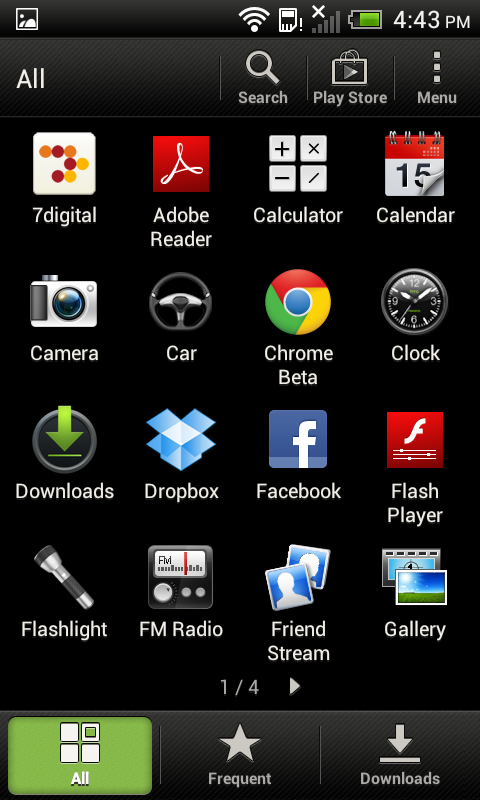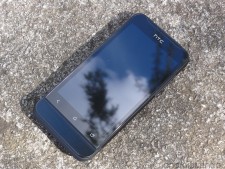HTC One V review

HTC's One series is all about hero devices. The One X is the all-singing, all-dancing flagship phone, while the One S delivers formidable specs in a smaller, sleeker form factor. And at entry level, there's the HTC One V, a hero device for the mainstream market, which resurrects one of HTC's iconic designs of old. Yep, it's an updated version of the venerable HTC Legend, complete with aluminum construction and that famous protruding chin.
That such a product is now considered entry-level, and priced as such, is a testament to the blistering pace at which smartphone technology is developing. The One V brings respectable hardware internals together with Android 4.0 and Sense 4.0, creating a smartphone that just over a year ago would've been considered a high-end device.
So join us after the break to see how HTC's mainstream champion holds up, in our full review of the One V.
Pros
- A solid entry-level handset with great build quality. Delivers a decent screen and good battery life, along with the latest version of Android. Excellent camera for a basic, less expensive smartphone.
Cons
- Tiny internal storage, no removable battery. Software seems artificially limited in places. Starting price is a little too high for our liking.
The Bottom Line
The HTC One V isn't going to blow your head off with bleeding-edge hardware or full-featured software, but if you want a basic Android experience without breaking the bank, it's a dependable all-rounder with one or two outstanding features.
Get the latest news from Android Central, your trusted companion in the world of Android
| Video walkthroughHardware reviewSoftware reviewCamera tests | HTC One V first impressionsHTC One V forumsSense 4 walkthrough |
HTC One V video walkthrough
Check out our first impressions of the HTC One V
HTC One V Hardware
It's impossible to talk about the One V's hardware without touching on the origins of its design, which can be traced back to HTC's 2010 lineup and the introduction of the HTC Legend. Though the One V is a good deal larger than the most phones of that era, with more real-estate dedicated to the screen, it's clear where HTC's drawn inspiration from. With its chunky, angular appearance and curved corners, the One V is the spitting image of the old Legend. This gives it a distinctive appearance within the HTC One line -- whereas the One X and One S sport sleek, curved designs, the One V has a more basic, industrial look not unlike the Droid Incredible line.
With the exception of soft touch areas around the camera and SIM card door, the One V is essentially a big slab of aluminum with a screen on the front. While the Legend's chin was used to house an optical trackpad, the One V's is purely a design feature. It's there to look cool, and it also helps protect the screen when the device is laying flat. We noticed that the shape of the device helped it to sit easily in our hands without any risk of slippage, too.
The One V isn't particularly thin or lightweight, but it's clearly not trying to be. We've talked before about how HTC phones are always "proportional" in weight, and that's precisely how the One V feels -- not too heavy, not too light.
The phone includes the usual selection of buttons and ports you'd expect to find on an HTC One phone. There are three capacitive Android buttons under the screen for back, home and multitasking, along with a power button and headphone jack up top, volume rocker on the right and microUSB port on the left. The lower soft-touch part of the chassis is detatchable, revealing the (full-sized) SIM card and microSD card ports. Like the One S and One X, though, there's no removable battery -- it's powered by a 1500mAh pack that's sealed within the aluminum shell.
At the top of the chassis is the One V's 5MP ImageSense camera and single LED flash. Unlike the other HTC One phones, this sits flush with the back of the chassis, with no awkward bulge around the lens. We'll take a closer look at the camera later in this review, but suffice it to say this is no budget smartphone camera, and we've been very impressed with the results it's given us. The phone lacks any front-facing camera, however, meaning video calls are out of the question.
Powering the HTC One V is a 1GHz single-core Snapdragon CPU, along with 512MB of RAM. We've seen this combination in a number of HTC phones in the past year, including the Desire S and Droid Incredible 2, so it's a more than capable combination. The One V's 3.7-inch screen is a WVGA (800x480) SuperLCD 2 panel, which delivers similar color quality and viewing angles to what you'll find on the One X, albeit in a smaller screen at a lower resolution. Despite it being SLCD2, though, we found that the One V didn't hold up quite as well as its big brother in direct sunlight. That said, it was still usable, just not quite as clear.
Our main hardware beef with the One V concerns its meager internal storage. Out of the box you've got just under 1GB of app storage and 95MB of USB storage on the phone, backed up by a bundled 2GB microSD card. Sure, this is expandable up to 32GB with the purchase of a replacement card, but the out-of-the-box experience is going to get claustrophobic pretty quickly if you plan on loading the phone up with music and photos.
Finally, we should mention that the One V does in fact make phone calls, in case you were wondering, and we didn't notice any issues with cellular or Wifi reception on the device.
HTC One S Software
Like the other One series phones, the HTC One V runs Android 4.0.3 Ice Cream Sandwich and HTC Sense 4. We're still seeing more phones than we'd like shipping with Gingerbread, and many of them are entry-level models. So hats off to HTC for getting the latest version of Android out there on their budget model.
Read our complete guide to HTC Sense 4
The One V's version of HTC Sense is a bit more basic than what we've previously seen on the One X and One S. Much of the animated eye-candy has been scaled back, likely on account of the phone's less advanced hardware. You're limited to five home screens, and features we remember from earlier Sense handsets like "leap" mode -- pinching a home screen to zoom out to an expanded view -- are absent. The 3D animations when switching between home screens have also been culled. The full complement of Sense widgets has made it across, though, from the iconic "weather clock" to newer additions like the tasks list and settings bar.
It's clear that some of these changes have been made so as to avoid over-burdening the phone's hardware. However, others areas appear limited just for the sake of it. For example, the two-year-old HTC Desire can handle seven home screens on similar hardware, so why can't the One V? Equally, the lack of DLNA support in the Gallery app is perplexing, given the Desire S and Desire HD both supported this feature on the same Snapdragon S2 chip. And fans of lock screen personalizations will be left disappointed, too, as there's only one lock screen setup available on the One V. In instances like these, the phone feels intentionally hamstrung.
Fortunately, though, many of the features we know and love from Sense 4, and earlier versions, have made it across in some form or other. HTC's excellent social integration and calendar app are present, along with the dedicated mail app that unifies multiple accounts into a single inbox. And HTC's content transfer app will be useful to feature phone owners making their first steps into the world of smartphones with the One V.
Beats Audio software enhancements are included in the One V, and they'll work with any app that plays back audio, including streaming music services like Google Play Music. As we've said in previous reviews, your opinion of these enhancements will likely depend on which audio hardware you use with the device, as well as your own individual tastes. We've already expressed our disappointment that Beats hardware is no longer included with HTC phones, and unfortunately that's the case with the One V, too. The headphones included in the box are the bog-standard HTC earphones of old.
The new Sense camera app is fortunately unchanged from the One X and One S, and we'll delve into that in some more detail later in this review.
In terms of bundled third-party stuff, you've got Adobe Reader, SoundHound, Dropbox (remember you get 25GB of free storage for two years just for using the One V) and TuneIn Radio, just like other HTC phones. And as the One V is an Ice Cream Sandwich device, if you want to disable any of these, you're free to do so.
The One V is a relatively snappy performer considering its hardware, although we noticed that it wasn't quite as responsive as the One X or One S in side-by-side testing (which shouldn't really come as a surprise). There's no "lag" in the traditional sense, but equally there's no denying that the X and S are just much faster and more responsive devices.
We've gone over much of HTC Sense 4 in exhaustive detail in our full Sense 4 walkthrough, which you should check out to find out more about the latest version of HTC's software.
Battery life
The bundled 1500mAh battery is more than sufficient to power the One V's basic hardware, and we had no trouble getting a full day out of the device with juice to spare. We're accustomed to seeing great power efficiency from Snapdragon chips and Super LCD screens, and that's exactly what we experienced during our time with the One V.
As we'd expect from an Ice Cream Sandwich device, the One V uses next to no power when idling. We only noticed increased battery drain during our camera tests, which involved taking lots of 5MP stills and a few minutes of 720p video. Again, that's nothing new.
HTC One V Camera
The One V includes a 5MP HTC ImageSense camera with single LED flash, but this is no basic no-frills shooter. HTC's brought all the high-end camera features of the One X and One S to bear in its entry-level product, including the dedicated image chip and backside illuminated sensor. This results in a camera experience that's on par with HTC's more expensive handsets -- the One V is almost as fast as its high-end siblings at capturing still images, and the same range of real-time effects are on offer, along with burst capturing capabilities.
Aside from the obvious megapixel difference, the only real change in quality we noticed related to dynamic range, which was a little lower than on the 8MP ImageSense camera. The One V seemed to struggle a little transitioning between very light and very dark areas, particularly when recording video. Despite this, the phone produced some of the best photos we've seen from a budget handset, easily beating the Galaxy Nexus's 5MP shooter, and putting earlier 5MP efforts from HTC to shame. Low light shots were a particular strength of the One V, thanks to its backlit image sensor.
As far as video is concerned, the One V will record at up to 720p with 30 frames per second. Just like the One X and One S, though, the video camera struggles in low light, with the frame rate being reduced to 20 frames per second at times, as you'll see in our sample footage.
We've included a selection of images below, along with a few minutes of daylight and low-light video at 720p. You can download a zip containing the original images over here.


















Hackability
HTC has been proactively adding many devices to its bootloader unlock list over the past year, and although the One V isn't yet listed on HTCDev.com, we'd assume it will be shortly after release. As the phone isn't out yet, much of the development buzz surrounding the One V is focused on porting its "lite" version of Sense 4 to older devices like the Desire S and Desire HD.
Once it's released later this month, though, we suspect developers will quickly get stuck into porting popular custom ROMs to the One V, mainly because its chipset and screen size are extremely common in the Android ecosystem. Dozens of devices run Snapdragon S2 chips on WVGA screens, so there's plenty of development experience out there for the One V's hardware combo. Don't expect CyanogenMod builds to start appearing overnight, but later in the year we imagine there'll be plenty of quality custom ROMs for the One V.
Wrap-up
The HTC One V isn't going to blow your head off with bleeding-edge hardware or full-featured software, and if you're expecting a premium experience here, you may come away underwhelmed. In particular, we're not thrilled about the paltry 1GB + 2GB of internal storage on offer, and the pared-back version of Sense 4 is lacking some of the glitz that we've become accustomed to in the One X and One S. Equally, we're baffled by the lack of DLNA support and the 5-home screen limitation.
At its current price point of around £220-230 SIM-free, the One V's biggest competitors are last year's high-end phones. Shop around, and for the same price you could walk away with an HTC Sensation or Sony Ericsson Xperia Arc S -- both fine phones from mid-to-late 2011 with ICS updates now rolling out. If you're buying on-contract, we'd expect carriers to offer this phone for free, or with only a small up-front payment, which is a little more attractive.
Despite its limitations, the One V remains a solid budget device. If you want a basic Android experience without breaking the bank, it's a dependable smartphone with one or two outstanding features. The build quality and camera are among the best we've seen on a budget handset, and HTC should be applauded for not skimping in these areas. If you're after a good all-rounder at the £200 mark, you could do a lot worse than the HTC One V.

Alex was with Android Central for over a decade, producing written and video content for the site, and served as global Executive Editor from 2016 to 2022.






